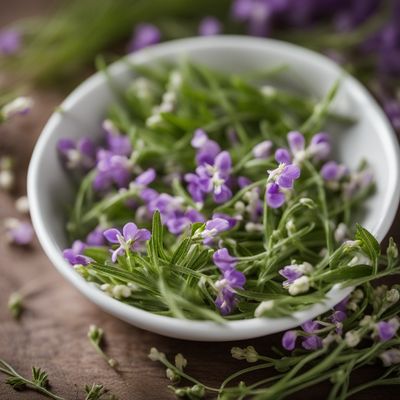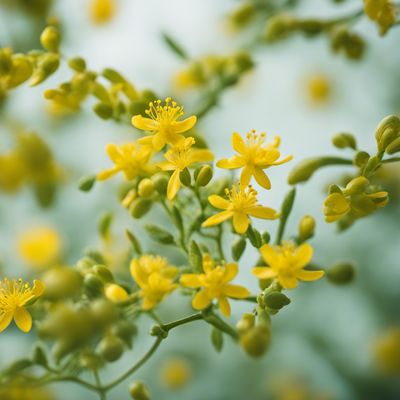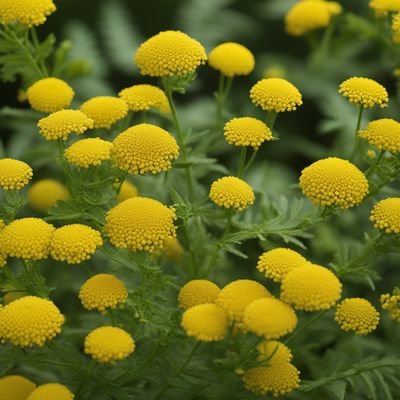
Ingredient
Cowberry infusion leaves
The Nordic Elixir: Cowberry Infusion Leaves
Cowberry infusion leaves are small, glossy leaves with a vibrant red color and a tart, slightly bitter taste. They are often used to make infusions, teas, jams, and sauces, adding a tangy and refreshing element to various recipes.
Origins and history
Cowberry infusion leaves have a long history in Nordic countries, where they have been used for centuries in traditional dishes and herbal remedies. They are native to the northern regions of Europe, including Scandinavia and Russia. These leaves are highly valued for their medicinal properties and are often foraged in the wild.
Nutritional information
Cowberry infusion leaves are rich in antioxidants, vitamins C and E, and various beneficial plant compounds. They are also low in calories and contain dietary fiber. These leaves are a natural source of quinic acid, which gives them their characteristic tart taste.
How to select
When selecting cowberry infusion leaves, look for fresh leaves that are vibrant red in color and free from any signs of wilting or discoloration. If foraging in the wild, ensure that you are familiar with the plant and its surroundings to avoid any poisonous look-alikes. Alternatively, you can find dried cowberry infusion leaves in specialty stores or online.
Storage recommendations
To prolong the shelf life of cowberry infusion leaves, store them in a cool, dry place away from direct sunlight. If using fresh leaves, refrigerate them in a sealed container or wrap them in a damp paper towel to maintain their moisture. Dried leaves should be stored in an airtight container in a cool, dark pantry.
How to produce
Cowberry plants thrive in acidic, well-drained soil and are typically found in forests, bogs, and heathlands. They can be grown from seeds or propagated through cuttings. However, they require specific growing conditions, including cool temperatures and high humidity, making them more suitable for experienced gardeners or commercial cultivation.
Preparation tips
Cowberry infusion leaves can be used to make flavorful infusions and teas by steeping them in hot water for a few minutes. They can also be added to jams, jellies, and sauces to enhance their tartness. Additionally, these leaves can be used as a garnish for desserts, salads, and cocktails to add a pop of color and tangy flavor.
Culinary uses
Cowberry infusion leaves are commonly used in Nordic cuisine to make infusions, teas, jams, jellies, and sauces. They are often paired with game meats, poultry, and fish to balance their richness. These leaves can also be incorporated into desserts, such as pies, tarts, and cakes, to add a tangy twist.
Availability
Cowberry infusion leaves are primarily found in Nordic countries, including Finland, Sweden, Norway, and Russia. They are also cultivated in other parts of Europe, such as the Baltic states and Scotland. Fresh leaves can be foraged in the wild during the summer and early autumn, while dried leaves are available year-round in specialty stores.
More ingredients from this category » Browse all

Mullein infusion leaves
"Nature's Respiratory Remedy: Exploring the Benefits of Mullein Infusion Leaves"

Lime infusion leaves
Zesty Citrus Elixir: Unveiling the Magic of Lime Infusion Leaves

Toadflax infusion leaves
The Herbal Elixir of Toadflax

St. John´s Wort infusion leaves
"Nature's Sunshine: Exploring the Healing Powers of St. John's Wort Infusion Leaves"

Ground ivy infusion leaves
"Nature's Herbal Elixir: Unveiling the Wonders of Ground Ivy Infusion Leaves"

Fumitory infusion leaves
The Herbal Elixir: Unveiling Fumitory Infusion Leaves

Yarrow infusion leaves
The Herbal Elixir: Yarrow Infusion Leaves

Horehound infusion leaves
The Bitter Herbal Elixir

Jiaogulan infusion leaves
"The Immortality Herb: Unlocking the Health Benefits of Jiaogulan Infusion Leaves"

Lemon myrtle infusion leaves
The Zesty Elixir: Lemon Myrtle Infusion Leaves

Tansy infusion leaves
The Herbal Elixir: Tansy Infusion Leaves

Marshmallow infusion leaves
The Sweet Essence of Nature